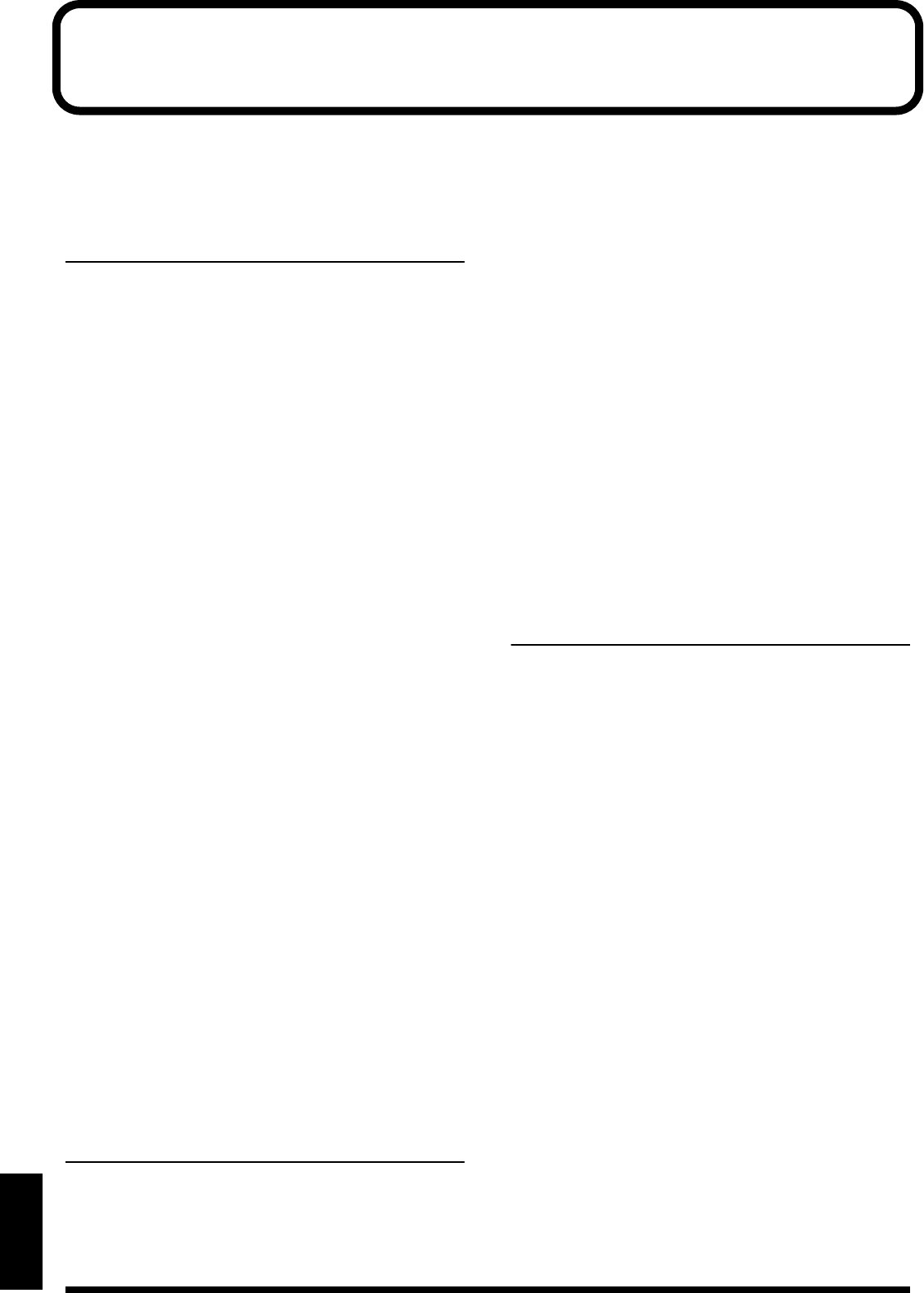
104
Appendices
Effect/Parameter List
* Parameters with the “#” showing can be assigned to the
MULTI-EFFECTS [CONTROL] knob. Set “MFX
CONTROL” following the instructions in
“How to Make
Settings”
(p. 76).
01: STEREO EQ (Stereo Equalizer)
This is a four-band stereo equalizer (low, mid x 2, high).
Low Freq (Low Frequency)
Select the frequency of the low range (200 Hz/400 Hz).
Low Gain
Adjust the gain of the low frequency.
Positive (+) settings will emphasize (boost) the low frequency
range.
High Freq (High Frequency)
Select the frequency of the high range (2000 Hz/4000 Hz/8000
Hz).
High Gain
Adjust the gain of the high frequency.
Positive (+) settings will emphasize (boost) the high frequency
range.
Mid1 Freq (Middle 1 Frequency)
Adjust the frequency of Middle 1 (mid range).
Mid1 Q (Middle 1 Q)
This parameter adjusts the width of the area around the Middle
1 Frequency that will be affected by the Gain setting. Higher
values of Middle 1 Q will result in a narrower area being
affected.
Mid1 Gain (Middle1 Gain)
Adjust the gain for the area specified by the Middle 1 Frequency
and Q settings.
Positive (+) settings will emphasize (boost) the Middle 1 range.
Mid2 Freq (Middle 2 Frequency)
Adjust the frequency of Middle 2 (mid range).
Mid2 Q (Middle 2 Q)
This parameter adjusts the width of the area around the Middle
2 Frequency that will be affected by the Gain setting. Higher
values of Middle 2 Q will result in a narrower area being
affected.
Mid2 Gain (Middle 2 Gain)
Adjust the gain for the area specified by the Middle 2 Frequency
and Q settings.
Positive (+) settings will emphasize (boost) the Middle 2 range.
Level (Output Level) #
Adjust the output level.
02: OVERDRIVE
This effect creates a soft distortion similar to that produced by
vacuum tube amplifiers.
Drive #
Adjust the degree of distortion. The volume will change
together with the degree of distortion.
Level (Output Level)
Adjust the output level.
It's a good idea to use the Output Level to adjust the difference
in volume between when Overdrive is applied and when it is
not applied.
Low Gain
Adjust the gain of the low frequency range.
Positive (+) settings will emphasize (boost) the low frequency
range.
High Gain
Adjust the gain of the high frequency range.
Positive (+) settings will emphasize (boost) the high frequency
range.
Amp Type (Amp Simulator Type)
Select the type of guitar amp.
SMALL
: small amp
BUILT-IN
: single-unit type amp
2-STACK
: large double stack amp
3-STACK
: large triple stack amp
Pan (Output Pan) #
Adjust the stereo location of the output sound. L64 is far left, 0
is center, and 63R is far right.
03: DISTORTION
This effect produces a more intense distortion than Overdrive.
Drive #
Adjust the degree of distortion. The volume will change
together with the degree of distortion.
Level (Output Level)
Adjust the output level.
It's a good idea to use the Output Level to adjust the difference
in volume between when Distortion is applied and when it is
not applied.
Low Gain
Adjust the gain of the low frequency range.
Positive (+) settings will emphasize (boost) the low frequency
range.
High Gain
Adjust the gain of the high frequency range.
Positive (+) settings will emphasize (boost) the high frequency
range.
Amp Type (Amp Simulator Type)
Select the type of guitar amp.
SMALL
: small amp
BUILT-IN
: single-unit type amp
2-STACK
: large double stack amp
3-STACK
: large triple stack amp
Pan (Output Pan) #
Adjust the stereo location of the output sound. L64 is far left, 0
is center, and 63R is far right.
RD-700_e.book 104 ページ 2004年4月26日 月曜日 午前11時54分


















